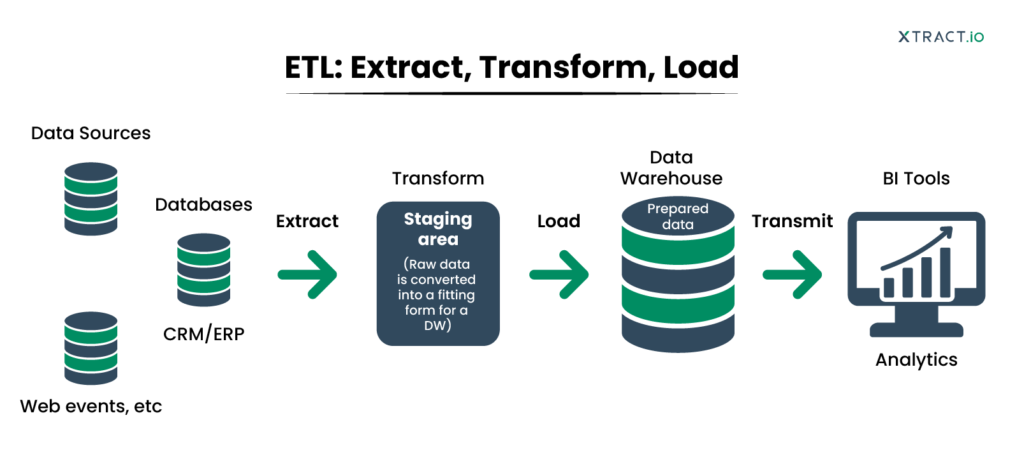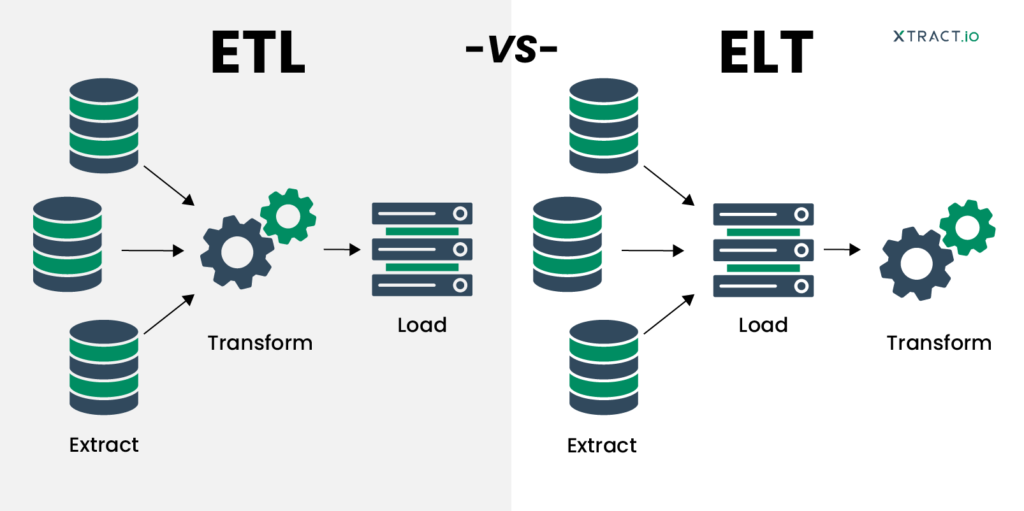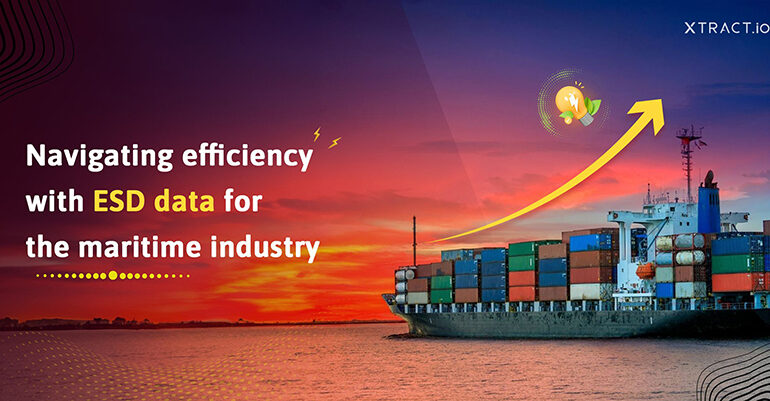Imagine you’re the manager of an e-commerce website and want to know which products are the best-sellers in different regions. You have data on purchases, but it’s messy. Some products have inconsistent naming, and the sales data is stored in multiple databases. ETL is like a master craftsman who extracts the data, standardizes product names, and consolidates the sales figures, transforming the chaos into a clean, unified dataset.
Businesses are loaded with information, from customer transactions and social media interactions to website clicks and sensor readings. Without a well-executed ETL solution, your data may have untapped potential. However, when done right, it is the bridge that connects your business to actionable insights, enabling informed decisions and driving success.
Understanding ETL: A closer look
So, what is ETL? It stands for Extract, Transform, Load and is a fundamental process in data management that deserves a closer examination. On the surface, this process appears straightforward—just three steps, right? But ensuring that the data is not just moved from one place to another but is refined, cleansed, and made ready for impactful business decisions is an intricate process. Let’s delve deeper into each facet of ETL to gain a comprehensive understanding:
Extract
Extracting data is the initial sweep, the sift through databases, spreadsheets, web services, and logs—each a potential goldmine of information. Much like a prospector gathering nuggets from different streams, the extract process in ETL is gathering data from diverse sources, laying the foundation for the ETL journey. Most of the organizations struggle to extract the right data at the right time. So, choosing the right extraction methods and connectors can help you to access the data efficiently.

Transform
The heart of the ETL process, data transformation, is where the magic happens. Raw data is rarely fit for analysis. It’s like having puzzle pieces scattered on a table; they must be assembled to see the big picture. This phase involves profiling and structuring data to ensure consistency. For instance, in an e-commerce sector, this might entail dealing with discrepancies in product names, currency conversions, and aggregating data from multiple sources. Data transformation may also involve creating new derived metrics and handling missing data to prepare the dataset for analysis.
Load
In the final phase of the ETL process, the extracted and transformed data is then gathered into a centralized database. This step ensures the data is organized in a structured format, making it readily available for querying and reporting.
Decoding data dynamics: ETL vs. ELT unveiled
In an ETL approach, the company first extracts data from these source systems and then applies extensive transformations to clean, structure, and enrich the data, ensuring it meets the required format and quality standards. This process loads the refined data into a data warehouse only after this data preparation. This method suits organizations with legacy data warehousing solutions that demand highly structured and preprocessed data for efficient querying and reporting.

On the other hand, an ELT approach takes a different route. It extracts raw data from source systems and loads it directly into a destination data repository, such as a cloud-based platform like Amazon Redshift. The transformations and data processing are performed within the target system. ELT is similar to placing items on store shelves as they are and then organizing or rearranging them as needed. It’s ideal for real-time or near-real-time integration, handling large data volumes, and is often associated with modern cloud-based data platforms. The choice between ETL and ELT hinges on factors like data complexity, volume, latency requirements, the technology stack used, and the cost structure, aligning with an organization’s specific data integration needs and analytical objectives.
Transform your business with ETL use cases
ETL can be a game-changer by transforming raw data into valuable insights and actionable information. Incorporating ETL solutions into your business strategy catalyzes transformation, empowering you to make data-driven decisions, streamline operations, enhance customer experiences, and drive growth.
Here are the top five ETL use cases that can profoundly impact your business and drive transformation:
Business intelligence and analytics
ETL plays a crucial role in empowering business intelligence and analytics initiatives. It provides accurate and up-to-date information for creating insightful reports and dashboards by extracting, transforming, and loading data into your analytics platforms. Consider a social media platform that uses ETL to gather and transform user engagement data. This transformed data can then be employed to generate insightful reports and real-time dashboards, guiding content strategy, ad campaigns, and user engagement improvements.
Customer insights and personalization
ETL is a game-changer for unifying customer data from diverse touchpoints. An ETL tool can help you create a holistic view of each customer, allowing customized strategies, improved customer experiences, and loyalty. Imagine a telecommunications company that employs ETL to merge customer call records, website interactions, and support center data. This integrated data enables you to offer personalized service recommendations, reduce churn rates, and increase satisfaction.
Financial management and reporting
ETL is critical in financial analysis and reporting. It enables businesses to collect, cleanse, and consolidate financial data from diverse sources, ensuring accurate financial statements, budgeting, and forecasting. ETL transforms financial data into a consistent format, simplifying auditing and compliance efforts and providing greater transparency into financial performance. For instance, the financial institution ensures that data is ready for reporting by employing ETL to consolidate data from various branches, ATMs, and online banking systems. This also facilitates accurate financial statements, compliance with regulatory requirements, and efficient risk assessment.
Supply chain optimization
Companies have started to invest in powerful ETL solutions to gather timely information about their supply chain operations. ETL also helps businesses identify cost-saving opportunities, such as more efficient transportation routes and reduced storage costs. Businesses can optimize inventory levels, minimize lead times, and enhance demand forecasting with an efficient ETL solution.
Final thoughts
ETL empowers data-driven decision-making and paves the way for streamlined operations, improved customer satisfaction, and sustained growth. Ultimately, it’s not just about the data—it’s about the possibilities it unlocks. ETL is the key that turns that data into actionable intelligence, helping businesses thrive in a rapidly evolving marketplace. The road to business success is paved with data, and ETL is the vehicle that takes us there. Take a free demo today to accelerate your ETL journey.







